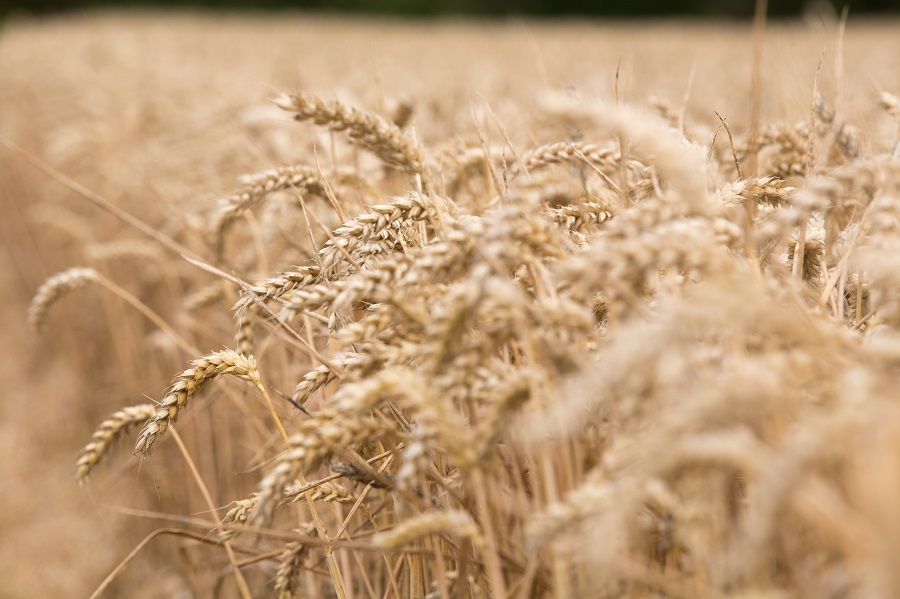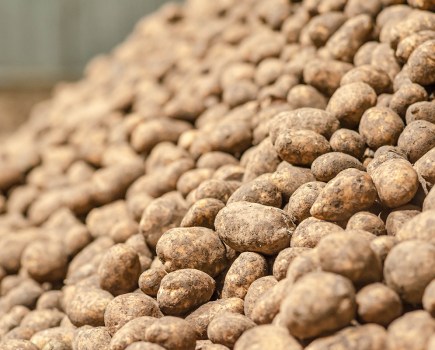Despite the COVID-19 pandemic Brexit negotiations have resumed and trade talks are underway with the US, so being prepared for what the future of arable markets may look like is essential. CPM seeks out the wheat varieties that could find themselves in high demand in post-Brexit Britain.
In uncertain times, you can be confident in its performance.
By Charlotte Cunningham
It’s perhaps rather strange that after more than three years of Brexit taking over our lives, conversations and newspaper headlines, the Coronavirus outbreak has seemingly wiped all traces of the fact that the UK will soon be preparing for life outside of the EU.
Trade negotiations with the EU have resumed, however, and have recently opened with the US. So a very different Britain may soon creep up on us all as we edge closer to the end of the transition period.
Commodity markets and how grain and produce is traded is the area most likely to impact arable farmers, and while we still don’t know exactly what trading agreements are going to look like, it’s important to be prepared for all eventualities, according to Chris Piggott, Frontier. “Even though it’s slipped out of focus, Brexit highlights the importance of planning and preparation for all businesses. However, I don’t think it changes the basic principles that underpin good farmer decisions on variety choice.”
With this in mind, Chris believes that sound wheat variety choice will play a key role in putting growers in the best position post-Brexit, in terms of meeting the demands of both domestic and export markets. “I think going forward, it’s really important to look at what you can put in the ground that will either reduce your overall risk as a business or increase your marketplace opportunity.
“In terms of reducing risk, this may mean looking to more tolerant varieties, or something that could find a home in a number of markets to reduce reliance on a single end user.
“Looking to increasing opportunities, this again may be considering how your wheat choice could spread across the most profitable markets, or perhaps opting for something that gives you the chance to reduce exposure to some of the most yield-robbing diseases.”
The limited pace at which farm businesses can realistically adapt means it’s important to be thinking now about what you’ll be growing in the seasons ahead, he adds. “The slight problem in agriculture is that we can’t always change things quickly, so key decision making often needs to be made early on – and variety choice often dictates everything else.”
To help with this process, Chris has highlighted some of his most opportunist/risk-reducing wheat varieties that could find themselves enjoying a resurgence in interest in this Brave New World post-Brexit.
KWS Zyatt
According to Chris, because of its good domestic demand, milling wheat will be a fairly safe choice for growers. “I think we’ll continue to see this good domestic demand, and there’s also the opportunity for growers to gain a premium in a good season, so I think including a milling type as part of your strategy is very important. Milling wheats also have the potential to fall back onto other markets which helps reduce that overall risk factor.”
Topping his list of favourite milling wheat varieties, is Zyatt, a Group 1 type from KWS which has excellent second wheat potential, says Chris. “If you’re growing milling varieties, second wheats tend to be the most consistent way of achieving the required protein specification.”
Chris believes that Zyatt’s consistency and ability to perform comes from a combination of both its disease resistance and its strong parentage. “Zyatt spawns from a Hereford-cross and we’ve found this often brings a good second wheat performance.”
As well as this, Zyatt also benefits from the Pch1 gene, believed to bring resistance to eyespot, he adds. “Eyespot is often a problem associated with second wheats, so having this gene really adds something to the variety.”
According to KWS’ Kirsty Richards, KWS Zyatt offers some exciting potential for growers. “As well as its excellent agronomic features, KWS Zyatt has 6% higher yields as a second wheat than Crusoe, and is widely accepted by UK millers. It also boasts a positive UKP status, so it’s very suitable for export, allowing growers to reach an even wider range of markets.”
RGT Skyfall
While it’s not exactly the new kid on the block, Skyfall – from RAGT – is a long-standing milling type that’s also worth considering, adds Chris. “Skyfall has been agronomically sound for a lot of people. It’s got pretty even disease resistance across the board and also offers midge resistance, which reduces the risk of damage to quality later in the season.
“Skyfall also benefits from very stiff straw, making it a viable option for growers struggling with lodging issues.
“Though there’s nothing really new to say about the variety, I don’t think we can talk about milling wheats of the future without a nod to Skyfall.”
KWS Extase
Third on the list, and another from the KWS stable, is Extase – a Group 2 milling wheat with a solid disease profile, says Chris. “In my experience, KWS Extase is the most suitable variety for the disease-risk averse farmer.
“It’s got incredibly good septoria and yellow rust resistance, which in my opinion are the most likely to have a significant effect on yield.”
With good disease resistance in its DNA, it’s perhaps unsurprising that KWS Extase has one of the highest untreated yields on the RL. But this could be a particularly important part of post-Brexit strategy, adds Chris. “Having a high untreated yield helps to give an element of flexibility in terms of managing the variety, such as spray timing, as well as minimising the impact of factors that could otherwise be very detrimental to overall yield.”
As a Group 2 wheat, there’s also options when it comes to marketing the variety, which could make it a strong contender in a new-look trading environment, says Chris. “There’s been conversations about how important Group 2 types are within the domestic market, but there’s the opportunity to fall back on lower quality and export potential, if necessary.
“Having three distinct markets to reach out to really reduces the risk to growers and gives them flexibility to look for the best price for their crop when it’s needed.”
KWS Firefly
Moving into the Group 3 category, KWS Firefly is another one that ticks a lot of boxes for Chris. “The Group 3 soft wheat market has always been really strong. There’s a good demand for these types and I don’t think we’ll see too much change there because of the domestic requirement.”
So, with good demand already in the bag, selecting a variety with high performance potential will see the biggest return to growers, he adds. “Firefly is a low-risk variety that produces good quality yield, and benefits from a strong disease resistance profile.
“Another advantage is its very stiff straw, which makes Firefly a good option for fertile sites.”
In terms of the numbers, from a yield perspective Firefly competes with a lot of feed wheats, says Chris. “For those that usually grow feed types, Firefly could be a good alternative option going forward due to the potential for better market opportunities, but without increased growing costs.”
With a strong grain package and a good balance of resistance and extensibility, KWS Firefly is well suited for biscuit manufacturers, says Kirsty. “The variety will also deliver on the continent thanks to being fully approved for export with the uks classification.”
RGT Saki
With some domestic markets providing premiums on soft Group 4 wheats, there’s the potential for growers to get a better price for their crop in some years.
When it comes to his variety of choice in this category, RGT Saki tops the list due to its all-round high performance, says Chris. “It’s an incredibly high-yielding wheat so it should generate a decent return, regardless of whether you’re able to get a premium or not.”
What sets it apart from its competitors is its flexibility in drilling date, he adds. “RGT Saki can be drilled from 10 Sept onwards – which isn’t the case for all varieties – but is also one of the best performing later sown types too. This is fairly unique and it’s not often that you get a variety that can perform so well at opposite ends of the drilling window.”
One area to watch for is the later maturity of RGT Saki, though that can be offset by earlier drilling, points out Chris.
Gleam
Moving onto the hard Group 4 feed wheat category, Chris believes the current demand for feed wheat is likely to remain in post-Brexit Britain. “There’s still a huge demand for feed wheat and I can’t see that going anywhere. Also, in some seasons there’s an exportable surplus of feed wheat, so there’s the potential for multiple markets avenues, too.”
For those that do opt for feed types, high-yielding, barn-filling types are key to a good return, and an example of this is Gleam, from Syngenta, he says. “Gleam is a very widely grown variety and that’s for a reason – it’s a very tolerant wheat that does well in a range of conditions.
“In my experience, it’s always produced very consistent high yields, and in uncertain times you can be confident in its performance.”
According to Syngenta’s Tracy Creasy, Gleam is a high yielding hard feed wheat that boasts consistently good yields and an all-round robust disease resistance. “If you’re looking for a variety with flexibility then you can expect consistent performance from Gleam, whether you’re drilling in early Sept, through to late Nov-Dec.
“Early maturity and OWBM resistance are additional benefits and Gleam’s good straw strength is also likely to attract the attention of growers.”
SY Insitor
Marketed with the tagline “you’re going to need a bigger barn”, SY Insitor, also from Syngenta, is another barn-filling feed wheat that’s worth considering, says Chris. “Insitor is the joint highest yielding variety on the RL, sitting alongside Skyscraper, so it’s one that ought to be included if you plan on growing feed types.”
As well as its headline yield of 103, Insitor is an exceptionally good choice in some specific situations, he adds. “It’s really well suited for those on lighter land. I believe this is largely due to its slightly taller straw, though interestingly, this isn’t to the detriment of its resistance to lodging.”
Another bonus of the variety is its specific weight, says Chris. “Specific weight isn’t always at the top of the list when it comes to selecting varieties, and while it’s not necessarily a market requirement, having something with a good specific weight, like Insitor, is good for not limiting market options.”
As a new entrant on the 2020/21 RL, Tracy believes that the variety encapsulates a number of high-quality traits to suit grower’s changing needs. “SY Insitor is poised to fit many criteria that growers require as we enter the new decade – high yield and good quality, but also robust septoria resistance. It’s suitable for later drilling as we look to manage weeds, pests and diseases with a diminished crop protection armoury.”
KWS Kinetic
Last, but not least, in Chris’ top eight is KWS Kinetic – another high-yielding feed wheat, with particularly good performance on heavy land. “KWS Kinetic produces remarkably high yields and has done consistently well on heavier ground. It’s also stiffer than a lot of other varieties which I believe to be an advantage.”
Like SY Insitor, KWS Kinetic also benefits from an incredibly good specific weight, he adds. “It has the second highest specific weight on the RL – beaten only by Costello.
“I don’t believe there’s anything else on the RL that delivers the same level of performance through its combination of specific weight, yield and standing power.”
For those looking to target the feed market, Kirsty believes KWS Kinetic is a solid choice. “With a specific weight of 78.5 kg/hl and the right balance of protein and HFN, we have no doubt that KWS Kinetic is able to fulfil the high-volume feed market requirements successfully.”




